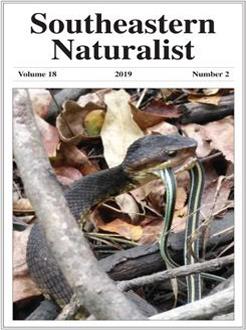Understanding neonate ecology is imperative for effective knowledge of life-history stages, which have historically been based upon adult ecology. We telemetered 12 neonate Agkistrodon piscivorus (Cottonmouth) and monitored their spatial use, activity, and habitat selection. Neonates did not have large spatial requirements, nor did they disperse far before hibernation. Neonates selected habitat edges, and within edges they used areas with thick vegetative cover. We suggest that the habitat selection and limited use of space by neonate Cottonmouths are products of the migration their mothers make before parturition. Habitat edges appear to be important for both parturition and hibernation. Our study offers valuable insight into the initial life-history stages of Cottonmouths and presents a good baseline for future research on their ontogenetic ecological development.
How to translate text using browser tools
14 June 2019
Neonate Cottonmouth Spatial Ecology and Habitat Selection: From Parturition to Hibernation
Zackary J. Delisle,
Dean Ransom,
Johanna Delgado-Acevedo
ACCESS THE FULL ARTICLE

Southeastern Naturalist
Vol. 18 • No. 2
May 2019
Vol. 18 • No. 2
May 2019




